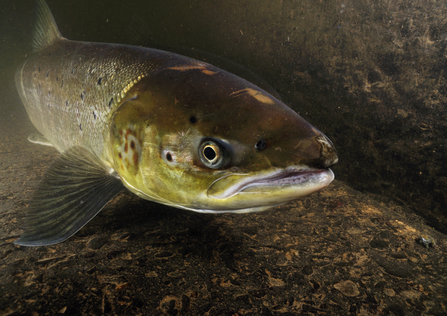A recent electrofishing survey carried out by West Cumbria Rivers Trust has monitored the fish populations in a stretch of Naddles Beck, which falls largely within Eycott Hill Nature Reserve. The surveys were carried out in September 2019, with the aim of providing follow-up surveys to those carried out at the start of The National Lottery Heritage Fund project in September 2015.
Electrofishing is a common method used to survey fish, which involves creating an electric field in the water in order to temporarily immobilise and net the fish. All fish species are counted and identified and then returned, unharmed, to the river. Additional information on size and age class is also collected for Atlantic salmon (Salmo salar) and brown trout (Salmo trutta), known collectively as salmonid species, in order to measure yearly variations of the juvenile populations and spawning success.
The surveys were carried out at six different points along Naddles and Barrow Beck, two tributaries which flow in a south westerly direction and eventually converge with the River Glenderamackin. Five of the six sites are within the boundary of Eycott Hill Nature Reserve and the Barrow Beck location is further downstream. It is unknown how long salmon have been absent from Naddles Beck but they have been present in the River Glenderamackin at Mungrisdale for a long time.


